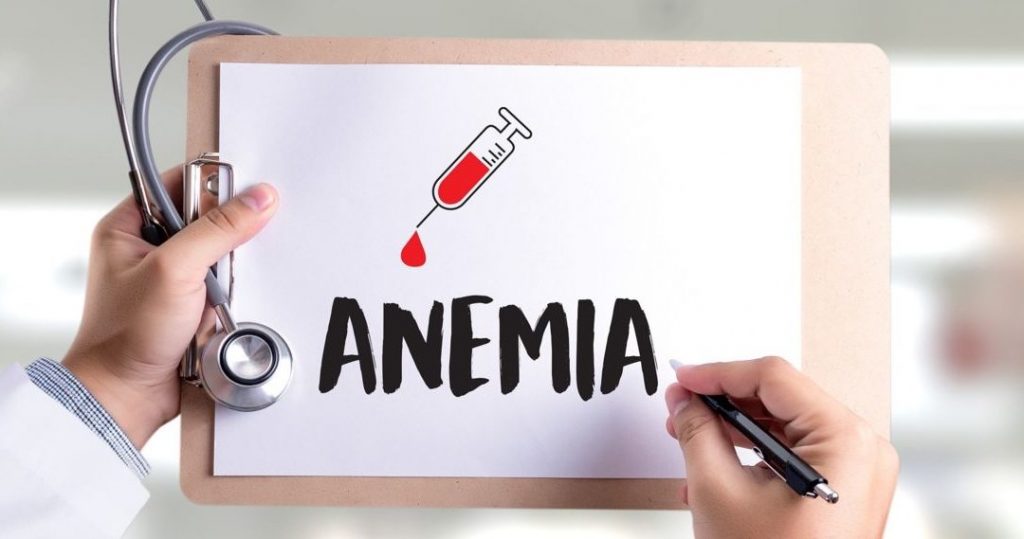This comprehensive profile of tests is designed for patients with anemia (low red blood cell mass) to determine the cause and extent of this disorder. These tests give a complete overview of all components of the hematologic system.
Health Testing Centers recommend that this test be performed in cooperation with your doctor’s recommendations. if you have been diagnosed with anemia or if you are following your blood counts to evaluate the progress of your anemia. The Anemia Profile Test can also create a valuable baseline to which your doctor can compare future blood test results. The Anemia Profile includes:
Complete Blood Count (CBC), With Differential and Platelet Count
The CBC measures the number and size of red blood cells, and the number, and type of white blood cells. The number of platelets, and the amount of hemoglobin in your blood. Anemia can occur for a variety of reasons including blood loss, and destruction of blood cells by the immune system. And the failure of the bone marrow to produce more red blood cells.
The number and size of red blood cells, as well as the amount of hemoglobin they contain, can give your doctor clues about why you are anemic. The white blood cell count and platelet count can also offer clues as to how your bone marrow is working. And whether your anemia is caused by an immune disease.
Iron, Serum
Since iron is contained in hemoglobin and is necessary for red blood cell production, the iron test measures how much iron is in your blood. Together with the total iron-binding capacity test, it can help determine whether your anemia is due to iron deficiency. It can also identify patients who are anemic due to other causes, such as chronic illness. In patients who are not anemic, this test can be used to screen for congenital disorders like hemochromatosis.
Total Iron Binding Capacity (TIBC)
Iron in the body is often bound to proteins, which makes it unavailable for use in making red blood cells. The TIBC test measures how much of your iron is bound up in proteins and when compared with the results of the iron test, helps your doctor determine if you are iron deficient.
In cases of chronic illness, much of your iron may bind up by proteins to keep it out of reach of microorganisms that depend upon it for growth. However, since it is then also unavailable for red blood cell production, you can also become anemic. The TIBC and iron tests must interpret together in order to give a comprehensive view of your iron levels.
Reticulocyte Count
Reticulocytes are immature red blood cells. If you are anemic and your bone marrow is responding to the anemia by making more red blood cells, there will be more reticulocytes in your blood.
The reticulocyte count helps your doctor determine if your bone marrow is responding to your anemia, and it also gives clues as to the cause of the anemia. For example, if you are anemic because you are iron deficient or because you are chronically ill, your reticulocyte count may be low, while if you are anemic because your immune system is attacking your red blood cells, your reticulocyte count may be high.
Changing Your Eating Habits For Good Health With A Nutritious Diet
Knowing why you are anemic is the first step to treating your anemia. It could be as simple as taking an iron supplement or it could involve further diagnostic testing. It is important to share these test results with your doctor for full interpretation so that you can make the best treatment decisions together for your health.
There are no fasting requirements for this test. Unless otherwise advised by your health care provider. You may eat and drink normally and take your prescription medications as directed by your physician.
Complete Metabolic Profile
This test provides information about every major organ system in the body, including the liver, kidneys, and muscles. It evaluates proteins, blood glucose, triglycerides, and cholesterol. Some diseases that cause anemia also cause changes in other organ systems. This profile gives a good picture of your body’s general level of health.
Heavy Metals/Toxins
Many toxins and heavy metals, including lead, associated with anemia and changes in the red blood cell indices. that measure on the Anemia Profile. If you or your physician have reason to believe that your anemia may be due to exposure to a toxin, consider adding one or more of these tests to evaluate your toxin levels.
Why so Important are Health Tests at Home?
As soon as we treat ourselves, particularly during these stressful times. We aren’t simply enabling durability, but we’re also passing that to our loved one members, and friends. The same as the virus, endurance and strength are also essential for contagion. Self-care is frequently confusing with self-love, self-care isn’t. “I will make myself better” instead it’s an intriguing method of adapting and nurturing oneself through extreme times. So that is the reason for important health test at home.
Website: www.mediyaar.com

